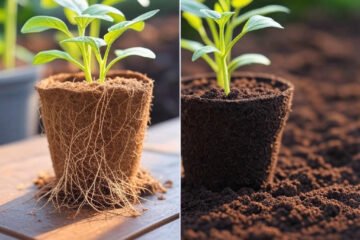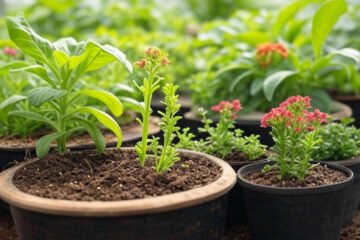
Coco peat for plants
7 Remarkable Benefits of Coco Peat That Will Transform Your Garden in 2025
Introduction
Are you struggling with poor soil quality or searching for an eco-friendly alternative to traditional gardening mediums? Coco peat, also known as coir or coconut fiber, has emerged as a revolutionary solution for plant enthusiasts worldwide. This sustainable byproduct of coconut processing has skyrocketed in popularity, with the global coco coir market projected to reach $1.3 billion by 2027. As gardeners increasingly seek sustainable options, coco peat stands out for its exceptional water retention, impressive aeration properties, and remarkable versatility across various growing applications. In this comprehensive guide, we’ll explore everything you need to know about this garden game-changer, from its environmental benefits to practical application techniques that can elevate your gardening success immediately.
What Exactly Is Coco Peat?
Coco peat is the processed form of coconut husks—the fibrous material found between the hard internal shell and the outer coat of coconuts. After extracting the long fibers (known as coir) for manufacturing products like mats and brushes, the remaining short fibers and dust undergo processing to create what we know as coco peat.
This remarkable growing medium boasts an impressive structure consisting of:
- Medium-sized particles that promote excellent root development
- Natural antimicrobial properties that resist fungal growth
- A neutral pH level (5.5-6.5) that suits most plants
- Sustainable credentials as it repurposes what would otherwise be agricultural waste
Unlike conventional peat moss harvested from fragile ecosystems, coco peat represents a renewable resource that’s environmentally responsible and increasingly available worldwide.
7 Game-Changing Benefits of Using Coco Peat
1. Exceptional Water Retention With Perfect Drainage
Coco peat can absorb water up to 10 times its weight, making it a hydration powerhouse for your plants. Despite this impressive retention capacity, it simultaneously provides outstanding drainage, creating the ideal balance that prevents waterlogging while keeping roots adequately moisturized. This dual capability reduces watering frequency by up to 40% compared to conventional soil, saving you time and conserving water resources.
2. Superior Aeration for Healthier Root Systems
The naturally occurring structure of coco peat creates a network of tiny air pockets that allow roots to breathe even when saturated. Research shows that plants grown in coco peat develop up to 30% more root mass due to this enhanced oxygen availability. The result? More vigorous growth, improved nutrient uptake, and plants that demonstrate remarkable resilience during stressful conditions.
3. Environmentally Sustainable Alternative
Unlike traditional peat moss extraction, which destroys valuable wetland ecosystems, coco peat production repurposes agricultural byproducts. Using coco peat reduces your carbon footprint while supporting circular economy principles. Additionally, coco peat is biodegradable and renewable, with coconut trees producing nuts year-round and requiring minimal processing for coir extraction.
4. Naturally Disease-Resistant Properties
Coco peat contains natural compounds that inhibit certain fungal pathogens and soil-borne diseases. Studies indicate that plants grown in coco peat show up to 25% reduced instances of damping-off disease and root rot compared to conventional soil mixes. This natural resistance often means less reliance on fungicides and healthier plants overall.
5. Ideal pH Range for Most Plants
With a pH typically between 5.5-6.5, coco peat provides an optimal growing environment for most garden plants and houseplants. This neutral-to-slightly-acidic range facilitates maximum nutrient availability, reducing the need for constant pH adjustments that other growing media might require.
6. Lightweight and Easy to Handle
Unlike heavy soil mixes, coco peat weighs approximately 60% less when dry, making container gardening and growing medium preparation significantly more manageable. This lightweight quality is particularly advantageous for rooftop gardens, balcony plantings, and situations where weight considerations are important.
7. Impressive Reusability Factor
Quality coco peat can typically be reused for 2-3 growing cycles with proper treatment—a significant advantage over single-use media. To prepare used coco peat for reuse, simply rinse thoroughly to remove salt buildup, sterilize if necessary, and rehydrate with fresh nutrient solution.
Frequently Asked Questions About Coco Peat
How Do I Prepare Coco Peat Before Use?
Most commercial coco peat comes compressed and requires hydration before use. Place the brick in a large container, add water according to package instructions (typically 4-5 times the volume of the compressed brick), and allow it to expand for 30-60 minutes. For best results, use room temperature water and break apart any clumps that form during the expansion process.
Does Coco Peat Contain Nutrients?
Coco peat naturally contains minimal nutrients, primarily small amounts of potassium. This means you’ll need to supplement with appropriate fertilizers tailored to coco coir growing. Many manufacturers now offer specialized “coco-friendly” nutrient formulations that account for coco peat’s unique cation exchange properties, particularly its tendency to bind calcium and magnesium.
Can Coco Peat Be Used Alone or Should It Be Mixed?
While coco peat can be used alone, particularly for hydroponic applications, many gardeners achieve optimum results by creating blends. Popular combinations include:
- 70% coco peat with 30% perlite for improved drainage
- 50% coco peat, 30% compost, and 20% vermiculite for container gardening
- 40% coco peat, 40% garden soil, and 20% compost for raised beds
How Long Does Coco Peat Last?
Properly stored dry coco peat can last indefinitely. Once hydrated and used for growing, high-quality coco peat typically remains effective for 1-2 years before its structure begins to break down. For container plants, refreshing at least 30% of the growing medium annually helps maintain optimal growing conditions.
Is Coco Peat Better Than Regular Soil?
Rather than being universally “better,” coco peat offers distinct advantages for specific applications. It excels in container gardening, hydroponic systems, seed starting, and situations requiring precise water management. Traditional soil, however, may provide more native microorganisms and natural nutrient cycling for certain applications.
Best Practices for Gardening Success With Coco Peat
For maximum success with coco peat, implement these professional techniques:
- Buffer before use – Soak coco peat in a calcium-magnesium solution before first use to prevent nutrient lockout issues during the growing cycle.
- Monitor EC levels – Coco peat can accumulate salts over time, so regular testing of electrical conductivity helps prevent buildup that could damage plants.
- Implement proper watering techniques – Despite its excellent water retention, coco peat benefits from a “water until runoff” approach, which flushes away accumulated salts and refreshes the medium.
- Supplement with beneficial microorganisms – Adding mycorrhizal fungi and beneficial bacteria can enhance coco peat’s performance by improving nutrient cycling and plant resilience.
- Consider coir quality – Source high-quality coco peat from reputable suppliers who properly wash and buffer their products, reducing potential issues with salt content.
Conclusion
Coco peat represents one of the most versatile and environmentally responsible growing mediums available to modern gardeners. Its exceptional water retention combined with superior aeration creates an ideal environment for robust root development and healthy plant growth. Whether you’re a hydroponic enthusiast, container gardener, or environmental advocate seeking sustainable alternatives, coco peat delivers remarkable performance while reducing environmental impact.
As you integrate this remarkable medium into your gardening practice, remember that understanding its unique properties—from nutrient management to hydration techniques—will maximize your success. The minor adjustments required when transitioning to coco peat are quickly overshadowed by the improved plant health, reduced watering frequency, and environmental benefits you’ll experience. Make the switch today and join the growing community of gardeners worldwide who have discovered the transformative power of coco peat.



